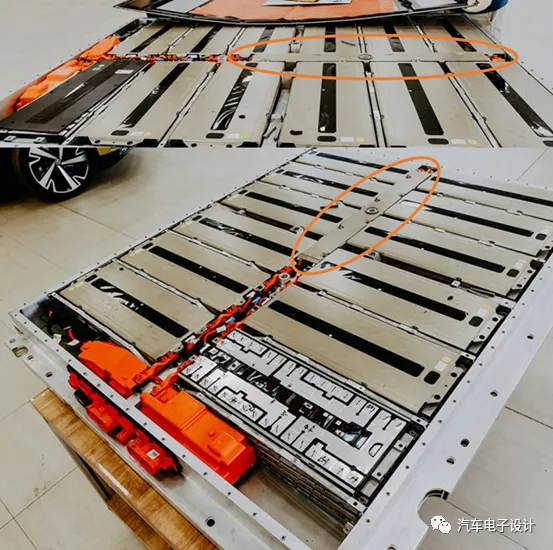Introduction
As the Volkswagen ID4 series is distributed in China through two joint ventures, we can learn about the battery systems used by the two joint ventures and the differences in the European version through official channels. From an overall design perspective:
-
The module design has switched from a soft package to a square shell. However, the subsequent universal product is based on the soft package, and compatibility is maintained in this regard.
-
Because the national standard requires a 5-minute spread time for thermal runaway, Volkswagen’s platform publicity indicates that the spread time of thermal runaway is greater than 17 minutes. Therefore, there are mainly some differences in the overall design, and some adjustments have been made to the module top and cover. From the video below, it can be seen that there is no design related to thermal runaway protection in LG’s 48 kWh battery system.
Volkswagen’s official disassembly process video
Information provided by Volkswagen in China
Because electric vehicle products need to fully demonstrate their design and product capabilities to consumers, we see that Volkswagen’s two joint ventures are showcasing their abilities in China. This 17-minute spread time for thermal runaway came from the material on the following page:

In the MEB system, the battery system is composed of an upper casing, a CMCe controller, a BMCe controller, a high-voltage cable, a module, Gapfiller thermal paste, a lower casing, and a bottom plate. The sealing of the upper and lower casings is formed by sealing wax, sealing ring, and sealing glue, as shown below. The surface between the battery cover and the body is pasted with thermal insulation material (corresponding to the area of the module below). In the European version, this is a complete aluminum stamping plate.

Volkswagen’s design for the module is to use mica material for the heat insulation board above the plastic cover of the module after the design is completed.
The exploded view below shows more clearly that heat insulation material has been applied on the top cover surface and on the top of the module. The mica sheet is tightly covered around the module according to the fixing method of the module, and according to the officially released information, it is finally installed uniformly through the four installation holes on the module after the module is completely installed.


In the close-up view, we can see that this part also includes the middle busbar connection and CMCe, which are all covered. As shown in the figure below, the overall design is tightly covered. The middle part is also locked with 6 holes together, and placed in the process of the battery core spray valve, the exhaust gas directly rolls up.

The entire battery system is wrapped up. In the entire exhaust design, the pressure relief valve is consistent with the European version, as shown in the figure below. The treatment of thermal runaway experiments of NCM811 battery cells is indeed a difficult point. From the current information of the video, it seems that a heat insulation pad has been added every two battery cells, as shown in Figure 7. Due to the restriction of expansion, the thickness of this heat insulation pad is not very thick.


ConclusionI am curious about why the German automakers are actively promoting the adoption of NCM811. Despite many improvements made, defects in material production processes regarding production consistency may cause a certain probability of fire risk in NCM811 products during batch use. Is the current design sufficient? This is currently the core promotional point for domestic three-element batteries that claim to be non-flammable. I believe that the next generation of MEB design will further strengthen this aspect.
This article is a translation by ChatGPT of a Chinese report from 42HOW. If you have any questions about it, please email bd@42how.com.
